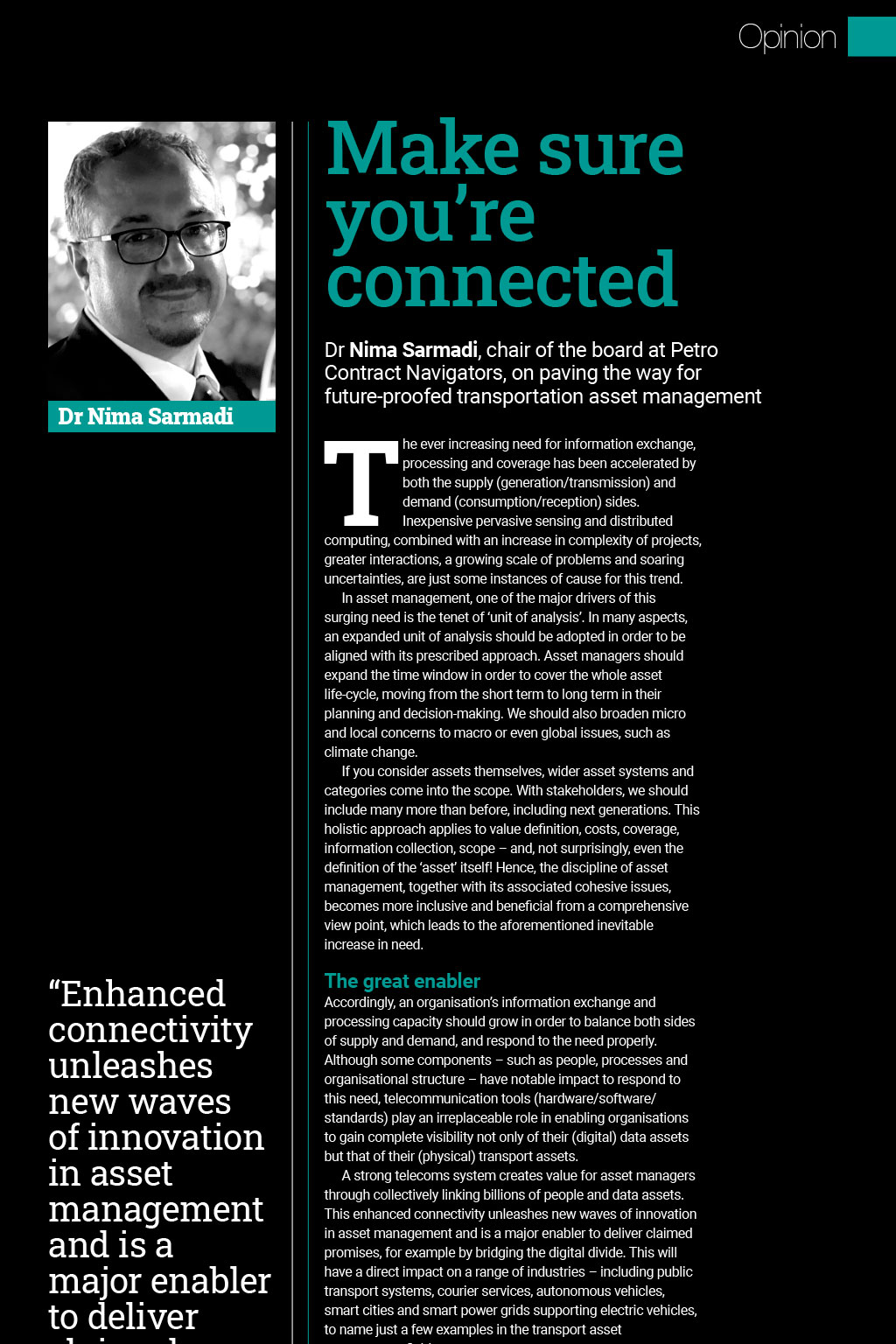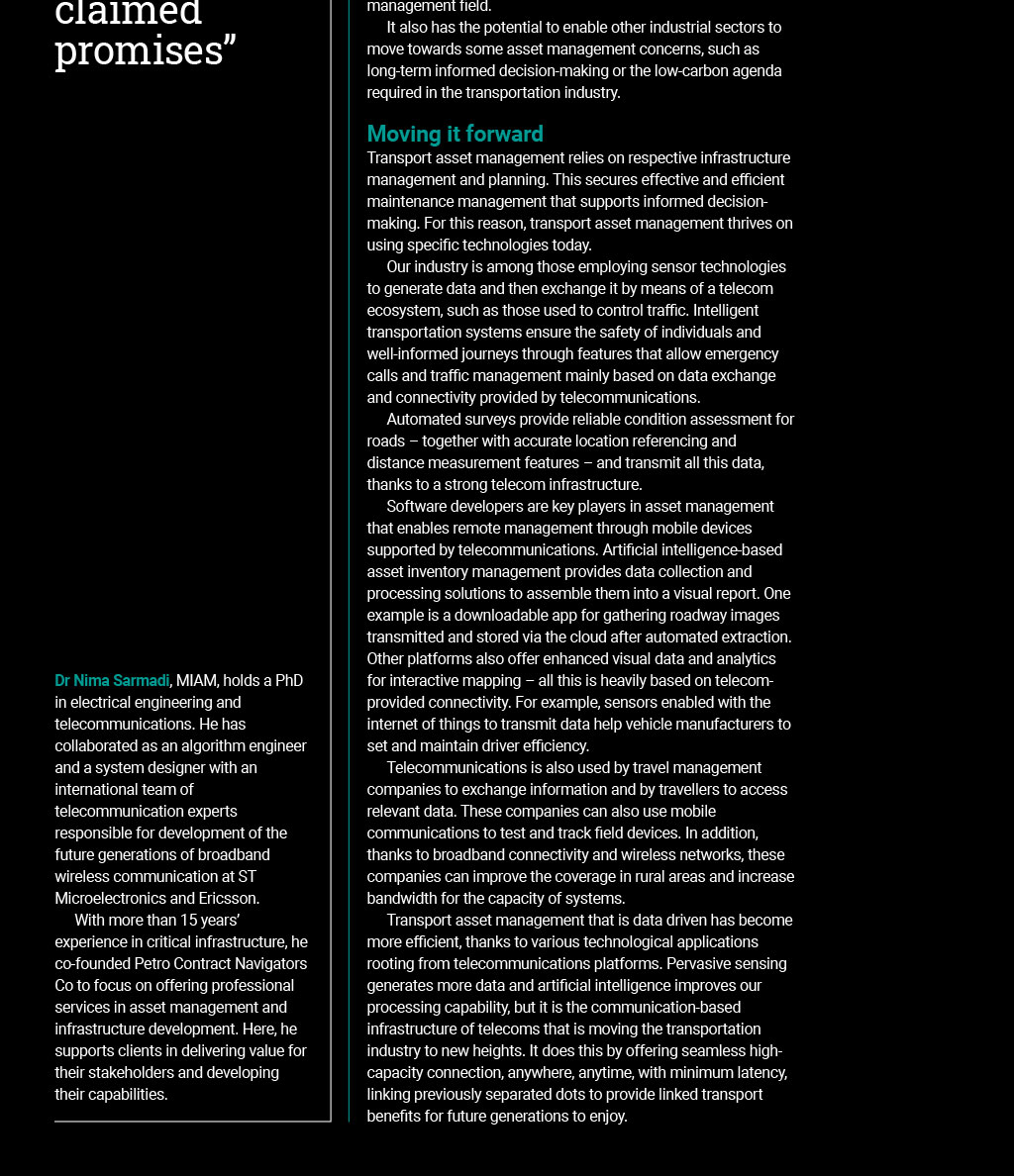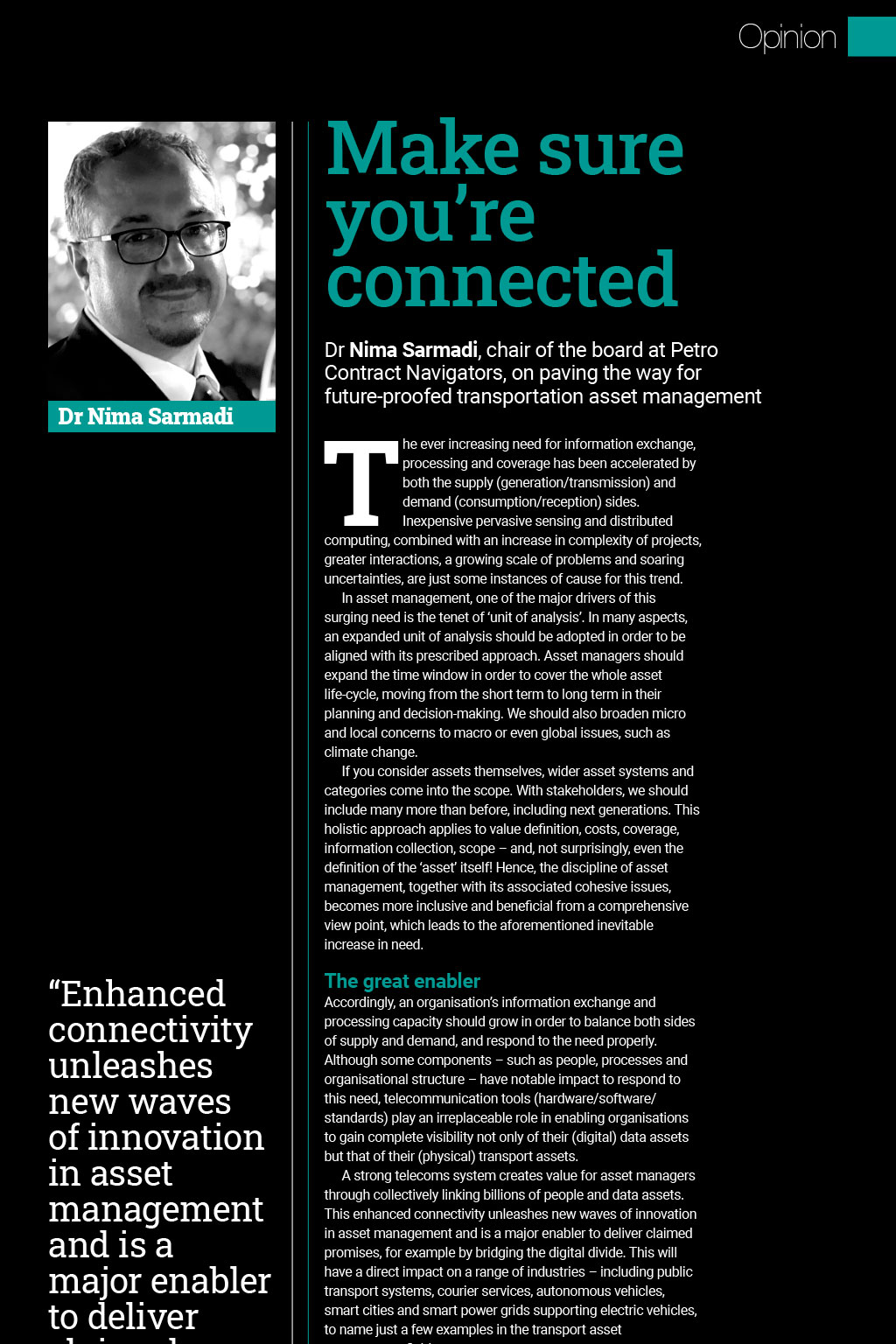




Opinion Make sure youre connected Dr Nima Sarmadi Dr Nima Sarmadi, chair of the board at Petro Contract Navigators, on paving the way for future-proofed transportation asset management The ever increasing need for information exchange, processing and coverage has been accelerated by both the supply (generation/transmission) and demand (consumption/reception) sides. Inexpensive pervasive sensing and distributed computing, combined with an increase in complexity of projects, greater interactions, a growing scale of problems and soaring uncertainties, are just some instances of cause for this trend. In asset management, one of the major drivers of this surging need is the tenet of unit of analysis. In many aspects, an expanded unit of analysis should be adopted in order to be aligned with its prescribed approach. Asset managers should expand the time window in order to cover the whole asset life-cycle, moving from the short term to long term in their planning and decision-making. We should also broaden micro and local concerns to macro or even global issues, such as climate change. If you consider assets themselves, wider asset systems and categories come into the scope. With stakeholders, we should include many more than before, including next generations. This holistic approach applies to value definition, costs, coverage, information collection, scope and, not surprisingly, even the definition of the asset itself! Hence, the discipline of asset management, together with its associated cohesive issues, becomes more inclusive and beneficial from a comprehensive view point, which leads to the aforementioned inevitable increase in need. Enhanced connectivity unleashes new waves of innovation in asset management and is a major enabler to deliver claimed promises The great enabler Accordingly, an organisations information exchange and processing capacity should grow in order to balance both sides of supply and demand, and respond to the need properly. Although some components such as people, processes and organisational structure have notable impact to respond to this need, telecommunication tools (hardware/software/ standards) play an irreplaceable role in enabling organisations to gain complete visibility not only of their (digital) data assets but that of their (physical) transport assets. A strong telecoms system creates value for asset managers through collectively linking billions of people and data assets. This enhanced connectivity unleashes new waves of innovation in asset management and is a major enabler to deliver claimed promises, for example by bridging the digital divide. This will have a direct impact on a range of industries including public transport systems, courier services, autonomous vehicles, smart cities and smart power grids supporting electric vehicles, to name just a few examples in the transport asset management field. It also has the potential to enable other industrial sectors to move towards some asset management concerns, such as long-term informed decision-making or the low-carbon agenda required in the transportation industry. Moving it forward Dr Nima Sarmadi, MIAM, holds a PhD in electrical engineering and telecommunications. He has collaborated as an algorithm engineer and a system designer with an international team of telecommunication experts responsible for development of the future generations of broadband wireless communication at ST Microelectronics and Ericsson. With more than 15 years experience in critical infrastructure, he co-founded Petro Contract Navigators Co to focus on offering professional services in asset management and infrastructure development. Here, he supports clients in delivering value for their stakeholders and developing their capabilities. Transport asset management relies on respective infrastructure management and planning. This secures effective and efficient maintenance management that supports informed decisionmaking. For this reason, transport asset management thrives on using specific technologies today. Our industry is among those employing sensor technologies to generate data and then exchange it by means of a telecom ecosystem, such as those used to control traffic. Intelligent transportation systems ensure the safety of individuals and well-informed journeys through features that allow emergency calls and traffic management mainly based on data exchange and connectivity provided by telecommunications. Automated surveys provide reliable condition assessment for roads together with accurate location referencing and distance measurement features and transmit all this data, thanks to a strong telecom infrastructure. Software developers are key players in asset management that enables remote management through mobile devices supported by telecommunications. Artificial intelligence-based asset inventory management provides data collection and processing solutions to assemble them into a visual report. One example is a downloadable app for gathering roadway images transmitted and stored via the cloud after automated extraction. Other platforms also offer enhanced visual data and analytics for interactive mapping all this is heavily based on telecomprovided connectivity. For example, sensors enabled with the internet of things to transmit data help vehicle manufacturers to set and maintain driver efficiency. Telecommunications is also used by travel management companies to exchange information and by travellers to access relevant data. These companies can also use mobile communications to test and track field devices. In addition, thanks to broadband connectivity and wireless networks, these companies can improve the coverage in rural areas and increase bandwidth for the capacity of systems. Transport asset management that is data driven has become more efficient, thanks to various technological applications rooting from telecommunications platforms. Pervasive sensing generates more data and artificial intelligence improves our processing capability, but it is the communication-based infrastructure of telecoms that is moving the transportation industry to new heights. It does this by offering seamless highcapacity connection, anywhere, anytime, with minimum latency, linking previously separated dots to provide linked transport benefits for future generations to enjoy.